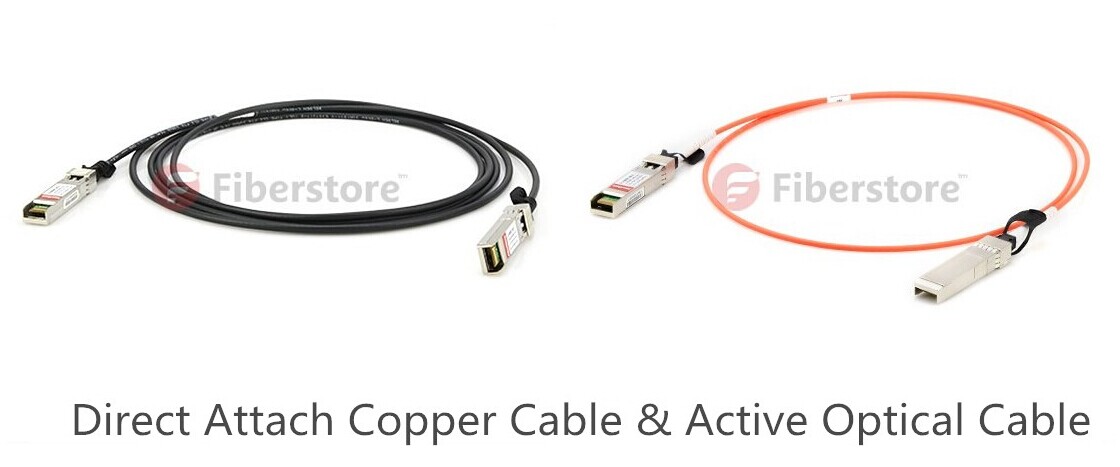Nowadays, more bandwidth is needed to meet the requirements of increasing data transmission between the servers and switches. Then many network equipment such as direct attach cable are designed to provide more bandwidth.
Direct attach cable, short for DAC, is a form of cable terminated with transceiver modules on each end. It’s widely applied in storage area network, data center, and high-performance computing connectivity, etc. It’s a cost-effective, low power consumption and low latency solution which is ideal for high-density.
DAC can be divided into several categories according to different standards. First, based on the connector type, manufactures like Fiberstore provide 10G SFP+ direct attach cables, 40G QSFP+ direct attach cables and 120G CXP AOC (Active Optical Cable). Second, DAC can be classified into active and passive versions. Third, DAC are made of the two kinds of cable materials including copper and optical fiber. They are respectively called direct attach copper cable and active optical cable. (As shown in the following picture)

- ConnectorWhy are there different connector types? Because Direct attach cables with different connectors can support different data rate applications, such as 10GbE, 40GbE... SFP+ cables with enhanced SFP connectors are designed to work with equipment with 10G SFP+ interface. SFP+ cables provide high performance in 10 GbE network applications. QSFP+ cables are applied in high speed network backbones, enterprise network switching and network storage. QSFP+ cables are used for 40GbE and Infniband standards, to maximize performance. 120G CXP AOCs integrates the design of 12-Channel VCSEL array and PIN array, providing 12 parallel data channels. Each channel can support up to 10.5Gbps transmission data rate, total 126Gbps bandwidth.
- Active & PassiveBoth active and passive direct attach cables are available in the market now. If signals process electronics in the transceiver modules to improve signal quality for a longer cable distance, the direct attach cable assembly is considered to be active. While if there are no signal processing electronics in the transceiver modules just for a short distance, the direct attach cable assembly is passive. Their big difference is about the data transmission distance.
- Cable MaterialWhat’s the differences between direct attach copper cable and active optical cable? Direct attach copper cable is good for handling high bandwidth transmission within short distance. But it’s difficult to be managed because the cable material is heavy and bulky. Besides, the nature of electrical signals makes the direct attach copper cable vulnerable to the effects of electromagnetic interference (EMI), such as undesirable responses, degradation, or complete system failure. On the contrary, AOC weighs less and can support longer transmission distance. It’s immune to electromagnetic energy since the optical fiber is dielectric (not able to conduct electric current). What’s more, it is an alternative to optical transceivers and it can eliminate the separable interface between transceiver module and optical cable. However, it costs more than copper cable.
Direct attach cables provide good performance in high speed applications in storage, networking and telecommunication. Direct attach cables can also save cost and power in short reach applications because they use the same port as an optical transceiver. It’s certain that the products will continuously evolve to meet consumers’ needs of higher data rates with lower power consumption and cost.
Originally published at http://www.china-cable-suppliers.com/
No comments:
Post a Comment